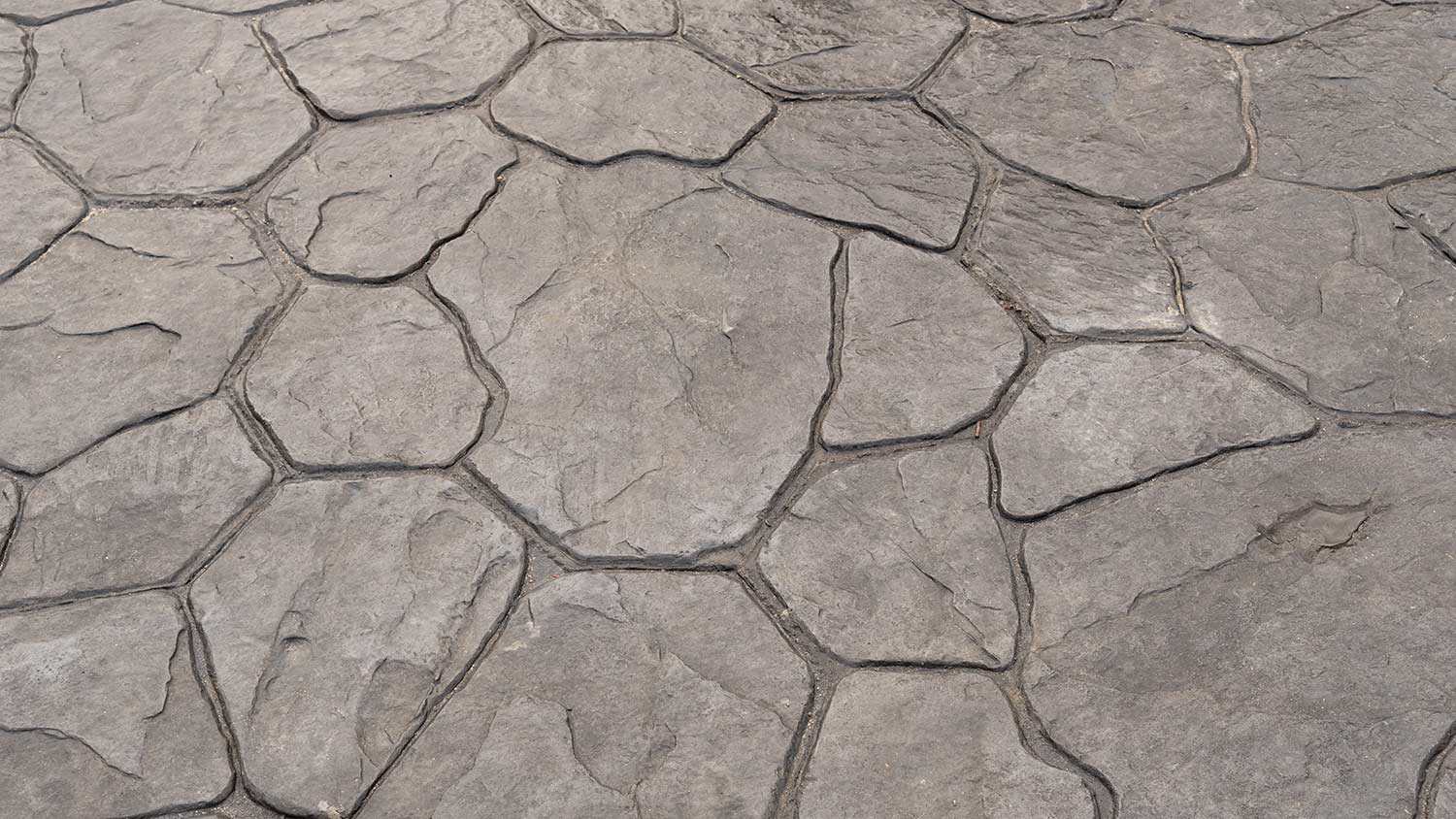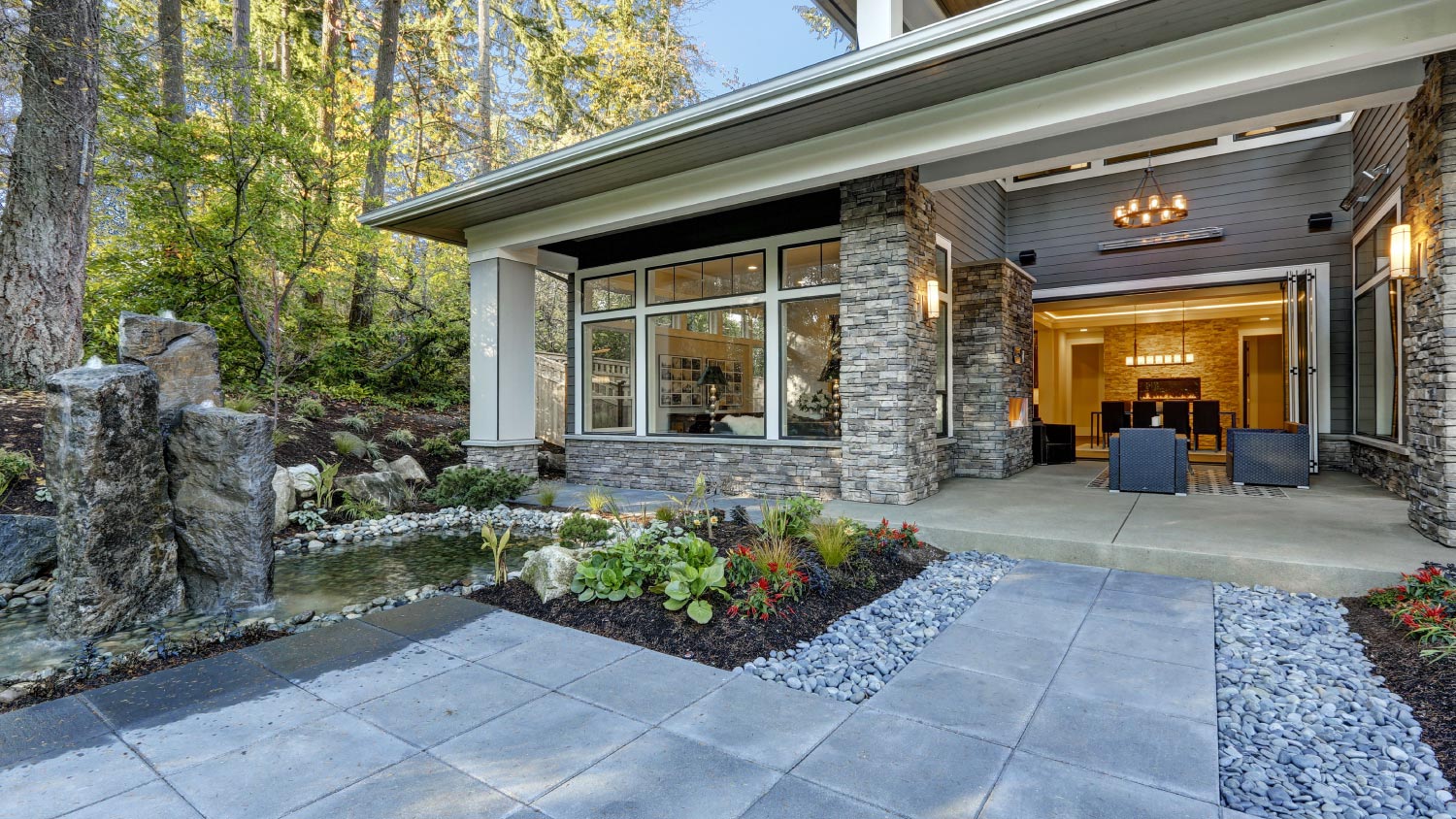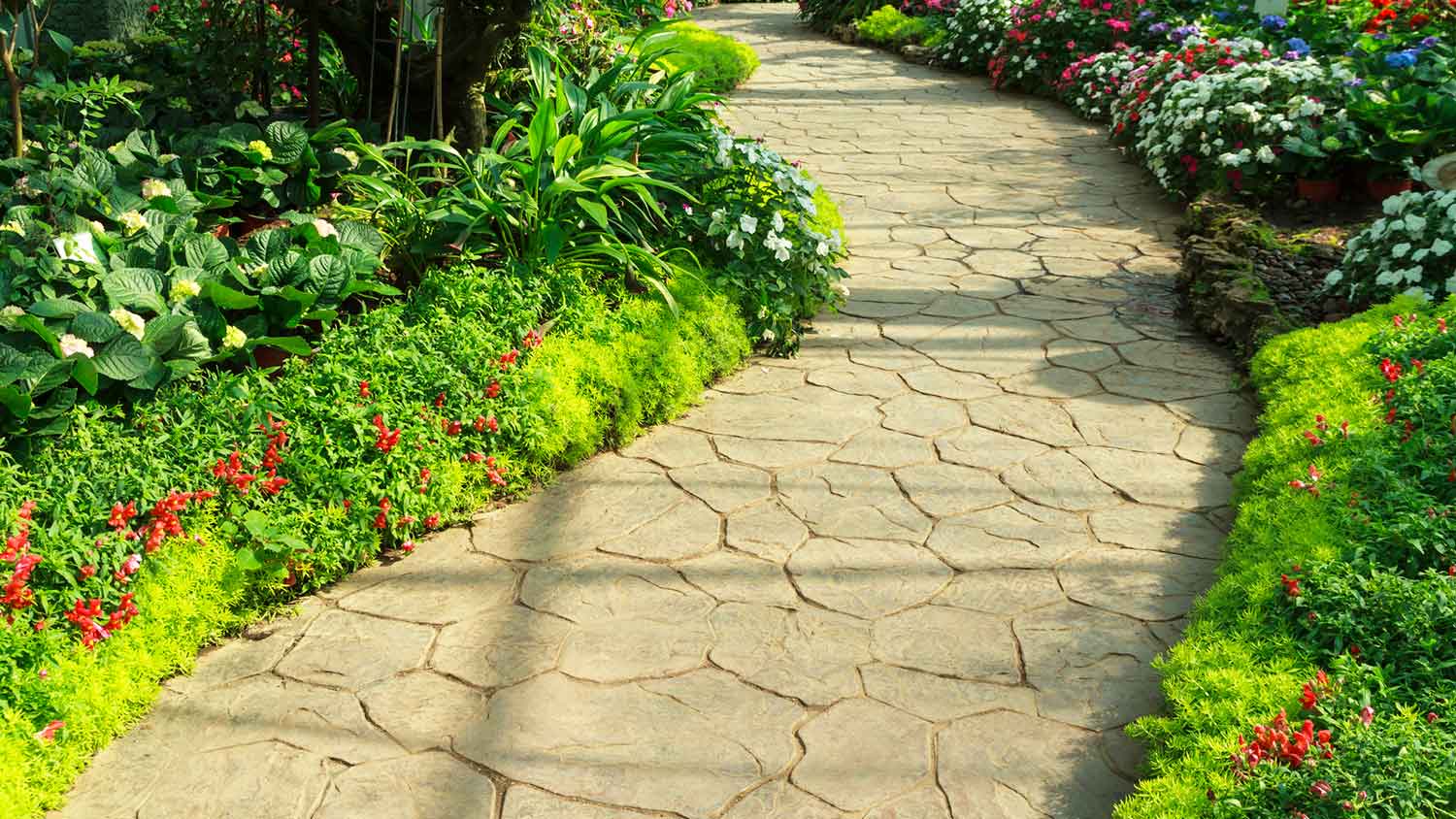
Discover stamped concrete wall cost estimates, including average prices, key cost factors, and tips to help you budget your project with confidence.
When deciding on stamped concrete or pavers, leave no stone unturned


Stamped concrete is one single slab with a surface pattern, while pavers come in individual pieces.
Both materials come in a variety of textures, colors, and patterns to choose from.
Unless the area you wish to cover is small, both require professional installation to ensure a long life span.
Costs are similar for stamped concrete and basic paver materials but can go up if you choose natural stone materials.
Repairs to pavers are relatively easy for homeowners, whereas stamped concrete repairs often require a professional.
When you compare stamped concrete vs. pavers, you find that each offers versatile looks and excellent durability. The main difference between them is that stamped concrete is a single piece of concrete that can keep weeds from pushing up through cracks, while pavers are individual pieces that fit together in varying patterns and often have sand between them to prevent movement and deter weed growth.
Before investing in materials, take a look at the differences between stamped concrete and pavers, as well as the pros and cons of each option. And if you’re covering a large space with either material, keep in mind that you’ll probably need to hire a pro to ensure the final result lasts for decades to come.
Stamped concrete is a single slab of concrete, similar to a large concrete patio, but rather than a smooth surface, the contractor uses stamps to create a patterned look. The final product can look like flagstone, pavers, wood, and more. Pavers are individual pieces made of clay, concrete, or natural stone that fit together to create your surface. You can customize the pattern to some extent, but the surface of the pavers is always flat, unlike stamped concrete.


Stamped concrete is a slab of concrete that has a pattern on the surface, which a contractor creates using a heavy stamp to make an imprint in the curing concrete. The pattern is customizable, and in most cases, you’ll have options for what your finished surface will look like. Some popular options include flagstone, pavers, and faux wood. Since concrete is extremely durable, you can often get a longer life span from a stamped concrete patio than using the materials it mimics.
| Pros | Cons |
|---|---|
| Less maintenance | Can be more costly |
| Very durable | Hard to repair |
| More customizable | Not DIYable |
| Prevents weeds | Color can fade |
Best For: Homeowners who want a unique appearance and high durability

Pavers are individual bricks or stones that fit together like a puzzle to create a patterned surface. Paver patios can resemble stamped concrete patios, but the blocks are separate and not a part of a single slab. You can choose pavers made of clay, concrete, or natural stone, and they come in various colors and shapes for customization. Pavers tend to hold their color better than stamped concrete, and they’re easier to repair because you can remove and replace a single paver.
| Pros | Cons |
|---|---|
| Often less expensive | Less customization |
| Easier to repair | Prone to weeds |
| Holds color better | More maintenance |
| More DIYable | Prone to settling |
Best For: Homeowners who want a more traditional look, longer-lasting color, and easier repairs
To decide between pavers or stamped concrete, you’ll need to compare the two side-by-side. We’ll include some of the more important aspects to compare below.
You can customize stamped concrete and pavers when it comes to color, pattern, and overall design, but you’ll have more options when it comes to stamped concrete designs. Since the stamp is what creates the pattern and texture on the surface of the concrete, you can make your stamped concrete project look like pavers, flagstone, wood, exposed aggregate concrete, and much more. Your only limit to the options is the stamps your professional has access to, but you can even order custom stamps for a truly unique appearance.
Both stamped concrete and pavers are very durable, but if there is consistent foot traffic on pavers (like cars pulling in and out of a driveway), they can settle in areas that see a lot of wear and tear. Concrete doesn’t have this issue—where you might get a small crack in the concrete that a professional can patch and seal, you can get a settled area in pavers that will require you to pull up the pavers and relevel the area.
Stamped concrete has a life span of about 25 years. With proper maintenance, pavers will last 50 years or more. You will have to replace a few pavers here and there, but overall, you’ll get more use out of pavers, ultimately leading to lower long-term costs in most cases.
Both pavers and stamped concrete require occasional resealing to prevent fading and water damage. Stamped concrete requires more frequent reapplication, but pavers will need more maintenance work overall to prevent weeds from growing through cracks or to replace pavers if they settle.
The longevity of stamped concrete and pavers can add to the resale value of your home and improve your curb appeal. Stamped concrete can look unique and colorful, and pavers can easily create a personalized driveway or patio. The maintenance for either has the potential to be expensive, though you might be able to DIY some paver maintenance. Overall, most buyers will likely see pavers and stamped concrete as a positive addition to your home rather than a liability.
Stamped concrete requires a professional to repair it, especially if you want to maintain the clean, uniform look it provides. Matching colors during repairs can also be difficult and demands help from a concrete stamping company near you. However, maintenance requires little more than keeping the concrete clean, avoiding deicers, and keeping a consistent resealing schedule.
Pavers have the potential for DIY repairs if settling or cracks are confined to a small area. Unlike stamped concrete, you can replace single pavers rather than repairing the entire slab. However, if it’s a larger area, you may need to relevel before replacing the pavers. Maintenance includes periodic resealing, and you may need to add joint sand occasionally.
If you need to cover a small area, you could install pavers yourself, especially if you have some DIY experience. Stamped concrete, on the other hand, requires special equipment for installation that would be cost-prohibitive to purchase, especially if you want custom stamps. Plus, you’ll need some experience to pick the right concrete and pour it correctly.
Pavers are easier to DIY, but it’s still a good idea to hire a local paver installation company to make sure the finished product looks professional and lasts for decades to come.
Stamped concrete costs between $8 and $28 per square foot in most cases, with an average cost of around $12. Pavers cost between $8 and $25 per square foot, and the average also sits around $12. In many cases, pavers and stamped concrete will cost around the same amount to install.
However, custom-stamped concrete patios and walkways can reach a bit higher per square foot, potentially bringing the total cost a few hundred dollars higher. Repair costs for stamped concrete are usually higher, contributing to higher long-term costs.
Stacey L. Nash contributed to this piece.
From average costs to expert advice, get all the answers you need to get your job done.

Discover stamped concrete wall cost estimates, including average prices, key cost factors, and tips to help you budget your project with confidence.

Discover stamped concrete cost. Learn about installation prices, cost factors, and how to save on your stamped concrete project.

Stamped concrete maintenance takes a bit more delicacy than other surfaces. Here are seven ways to keep stamped concrete surfaces looking sharp.

A stamped concrete finish can brighten your dull driveway, walkway, or patio. Here are the questions to discuss with a stamped concrete installation pro.

Get the stylish look of pavers without the cost. Here's how to stamp concrete and tips for when it's best left to the pros.

Here’s what you need to know about stamped concrete overlays, including pros and cons, what they cost, and how they can give your concrete new life.